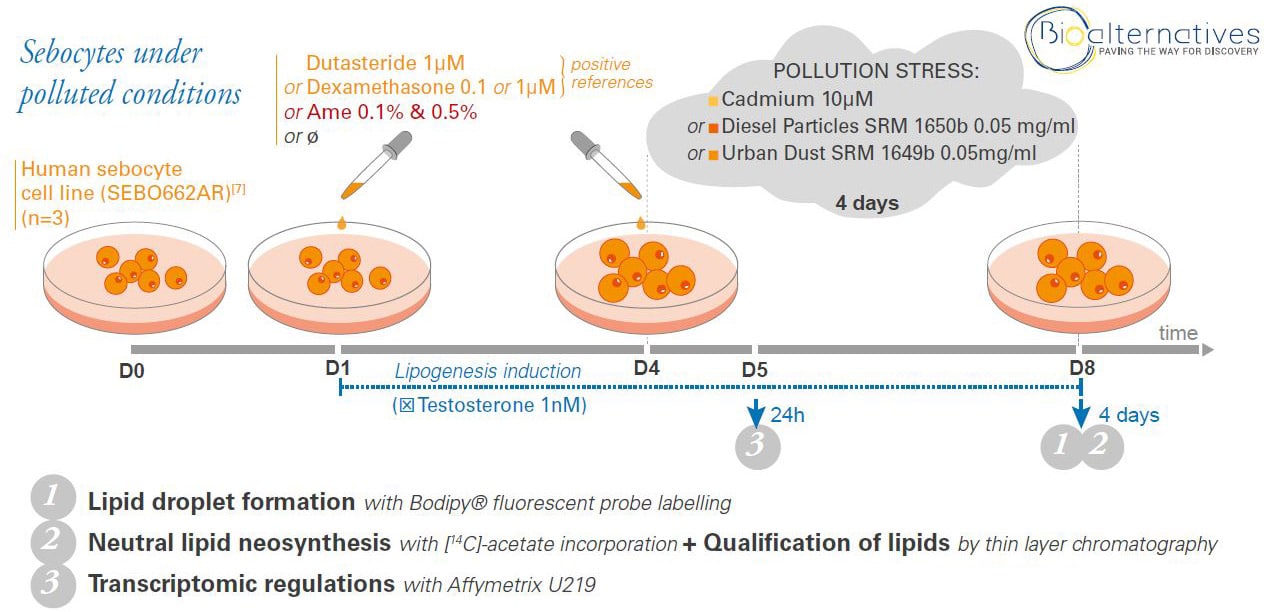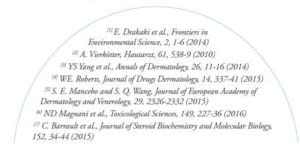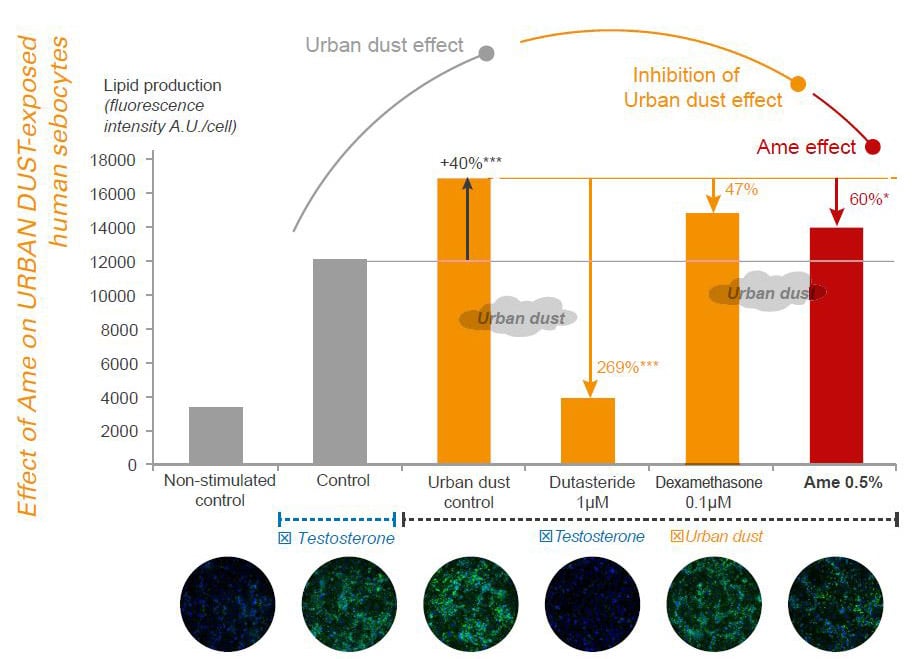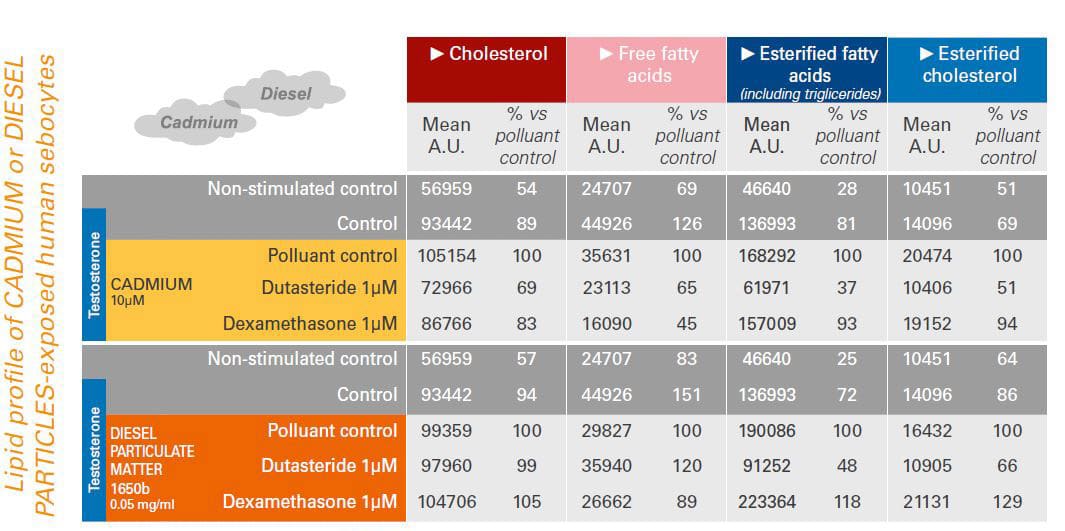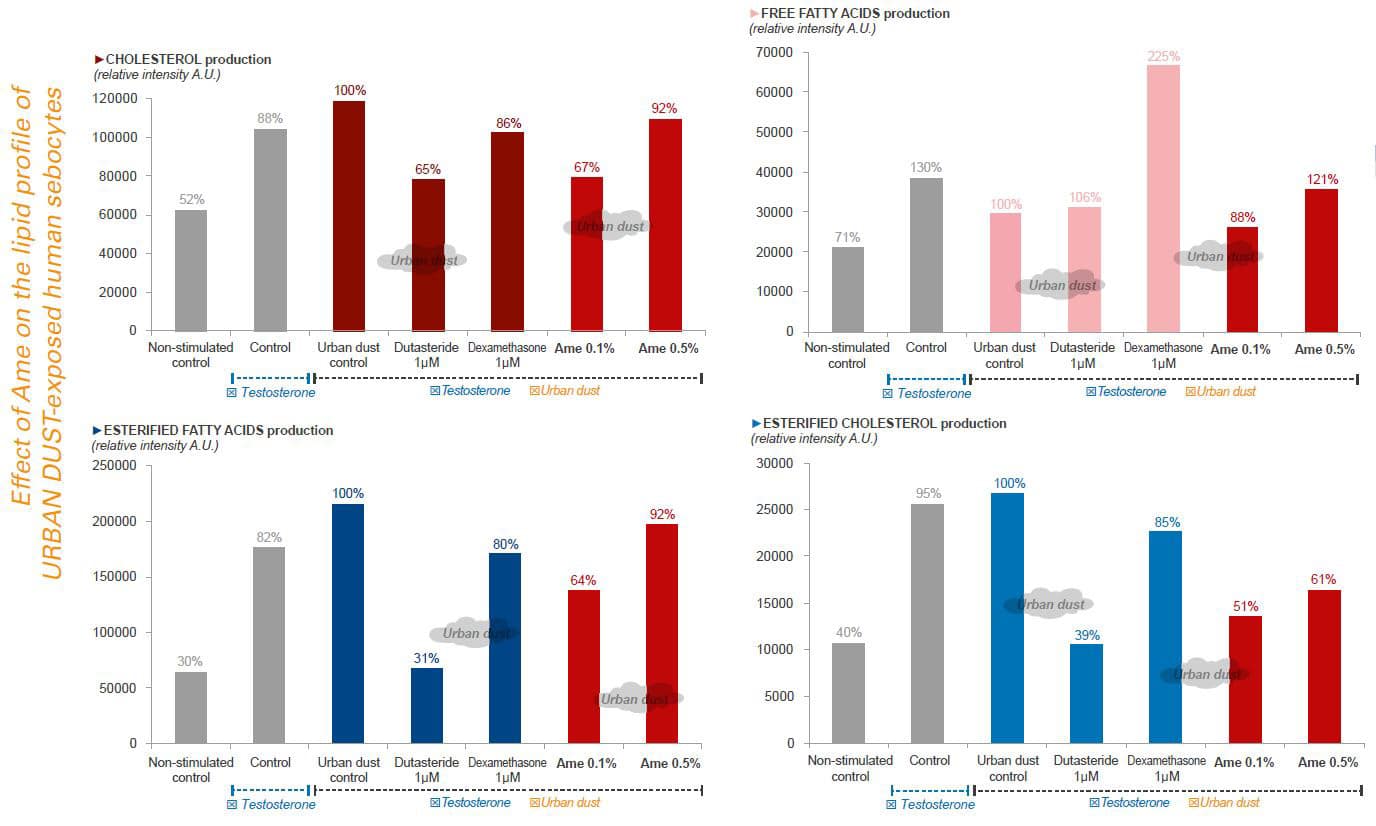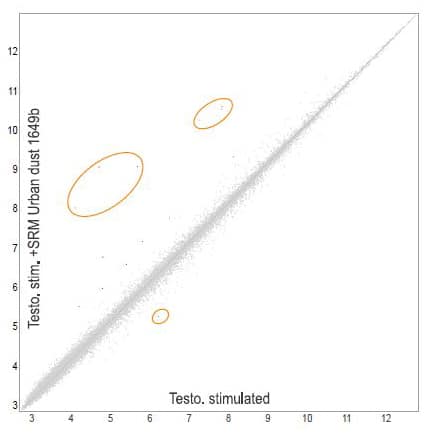Effects of different kinds of pollutants on the lipidic metabolism of human sebocytes and protective effects of a new macroalgae culture extract
Catherine KERN1, Erwan LE GÉLÉBART2, Laetitia CATTUZZATO, Sevda CORDIER-DIRIKOC3, Nathalie PEDRETTI3, François-Xavier BERNARD3, Sandy DUMONT1, Carla PEREZ4
1SEPPIC – Innovation Direction – 127 chemin de la Poudrerie BP90228, 81105 Castres cedex, France

2BiotechMarine – Innovation Direction – ZI BP72, 22260 Pontrieux, France
3Bioalternatives SAS – 1bis rue des plantes – BP N°50011, 86 160 Gençay, France
4SEPPIC – 819 West Nanjing Rd, Room 1508 Zhongchuang Building, Shangai 200041, China
Introduction
Pollution is a global health concern. Skin, being the interface between body and environment, is challenged everyday by atmospheric pollutants (particulate matters , toxic gases, indoor pollutants,…) which contribute to skin disorders such as psoriasis, atopic dermatitis, skin cancer, skin ageing, pigmentary disorders and acne [1–4].
Pollutants are supposed to act through 4 biological mechanisms:
- generation of free radicals
- induction of inflammatory cascades
- activation of aryl hydrocarbon receptor (AhR)
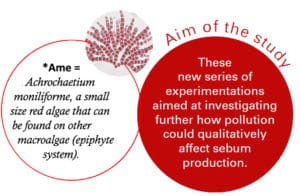
- alteration of cutaneous microflora [5, 6].
Our previous investigations showed that:
- Both sebocytes lipid production and skin sebum production are stimulated by some pollutants.
- Ame* acts as a urban life dermopurifying ingredient, by protecting epidermal cells from cadmium, human sebocytes from urban dust and skin from ozone.
Materials & Methods
Results & Discussion
1) Lipid droplet formation
Pollution: Increase lipid formation.
Ame: Decrease lipid formation (with urban dust)
2) Neutral lipidic neosynthesis
Conversion of fatty acids into triglycerides:
Increase with pollution
Decrease with Ame
3) Transcriptomic regulations (24h)
Only a few regulations observed with pollutants or Ame.
Putative regulated mechanisms:
Cyp-pathways
antioxydant defenses
Conclusion
Our results:
Enlighten new pollution-induced metabolic regulation of the lipid profile of stimulated sebocytes.
Suggest that underlying mechanisms are more likely to occur at the metabolic level than at the transcriptional level.
Related posts
Faites le plein d‘expériences en suivant toute l’actualité de Bioalternatives
- Nouveaux tests, modèles et services
- Articles et publications
- Evènements

